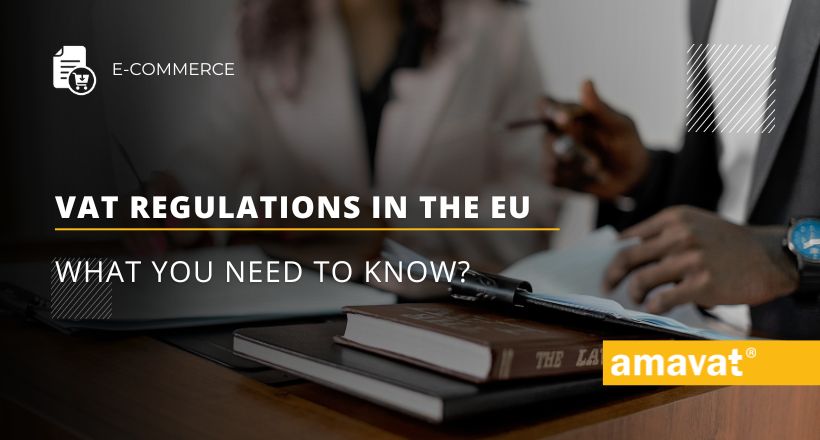VAT regulations in the EU: What you need to know?
Value Added Tax, commonly known as VAT, is a widely used consumption tax within the European Union. Its primary purpose is to burden the final consumer rather than businesses, although businesses are responsible for its calculation and remittance. Despite general EU rules, the ways in which VAT is applied vary between Member States.
Basic VAT principles
Within the European Union, standard VAT regulations apply, but their implementation can vary in practice depending on the country. VAT is charged at each stage of the supply chain, from production to sale to the final consumer. This includes purchasing components, transportation, assembly, packaging, insurance, and delivery to the final consumer.
VAT calculation: B2B and B2C transactions
VAT calculation between EU countries occurs at each stage of the goods or services delivery process, meaning the tax is mandatory at different stages of the supply chain. Unlike sales tax, which is only applied at the final transaction, VAT is collected at each level of passing goods or services. It’s important for companies to distinguish whether their deliveries are directed to other businesses (B2B) or individual customers (B2C), as this affects how and where VAT is charged. For B2B transactions, VAT is typically charged in the country where the customer is registered, whereas B2C services are taxed in the supplier’s country.
VAT rates in the EU: Types
VAT rates are applied across the entire European Union, but each member state sets them independently. There are several types of VAT rates:
- Standard rate
- Reduced rate
- Special rates
- Super reduced rates: Below 5%, applied to a limited number of goods and services in some countries.
- Zero rates: Some countries apply zero VAT rates to certain goods and services. Despite the zero rate, companies can deduct VAT paid on purchases related to such sales.
- Transitional rates: Apply to goods and services not listed in Annex III of the VAT Directive. Countries may apply these rates instead of the standard rates, provided they are not lower than 12%.
Each EU country applies a standard VAT rate that applies to most goods and services. This rate cannot be lower than 15%.
Some EU countries apply one or two reduced rates for selected goods and services listed in Annex III of the VAT Directive. These rates typically do not apply to electronically supplied services and cannot be lower than 5%.
Certain EU countries have special VAT rates that were applied before 1 January 1991 and were intended as temporary measures to facilitate the transition to EU VAT regulations. There are three types of special rates:
If you want to know specific VAT rates applicable in EU countries, read our article: VAT rates in the EU in 2024: Overview and analysis.
Why does every EU country use VAT?
When the European Community was formed, the six founding EU countries applied different forms of indirect taxes, primarily cascading taxes. These taxes were imposed at each stage of the production process, making it difficult to determine the actual amount of tax included in the final product price. This posed the risk that countries could unknowingly or intentionally subsidize their exports by inflating taxes eligible for refund upon export. To create an efficient and unified market in Europe, a neutral and transparent tax system was needed. VAT introduced this transparency, ensuring that exports are completely tax-free, thereby eliminating the possibility of hidden subsidies.
The role of the Commission in applying the VAT system in the EU
The European Commission plays a key role in ensuring the proper application of the VAT directive in the European Union. Each member state is responsible for implementing the directive’s provisions into its national legislation and ensuring their proper application within its territory. The Commission, acting as the “Guardian of the Treaties,” oversees that national rules and practices comply with EU law. This ensures the maintenance of a unified and fair VAT system throughout the European Union.
For specific issues regarding the application of VAT regulations, the European Commission cannot intervene directly or decide on matters concerning individual taxpayers. However, individuals can use national appeal procedures—both administrative and judicial. Alternatively, they can raise issues through SOLVIT. The Commission’s decisions in infringement proceedings do not directly impact individual taxpayer cases but aim to ensure compliance of member states with community rules.
The future of VAT in the EU
The European Union aims to further harmonize VAT regulations to simplify the system and reduce administrative burdens for businesses. Proposals include expanding the scope of the One Stop Shop (OSS), allowing businesses to declare VAT in one country even if they sell goods and services in multiple member states.
Summary
VAT is a key element of the tax system in the European Union. Its structure and principles aim to ensure fair and efficient taxation of consumption, while enabling easier management and control of tax at every stage of production and distribution. Although VAT regulations are standardized at the EU level, differences in rates and their application can pose challenges for businesses operating in different EU countries.
We encourage consultation with experts to avoid misunderstandings and ensure compliance with applicable regulations: Contact us – amavat®.





